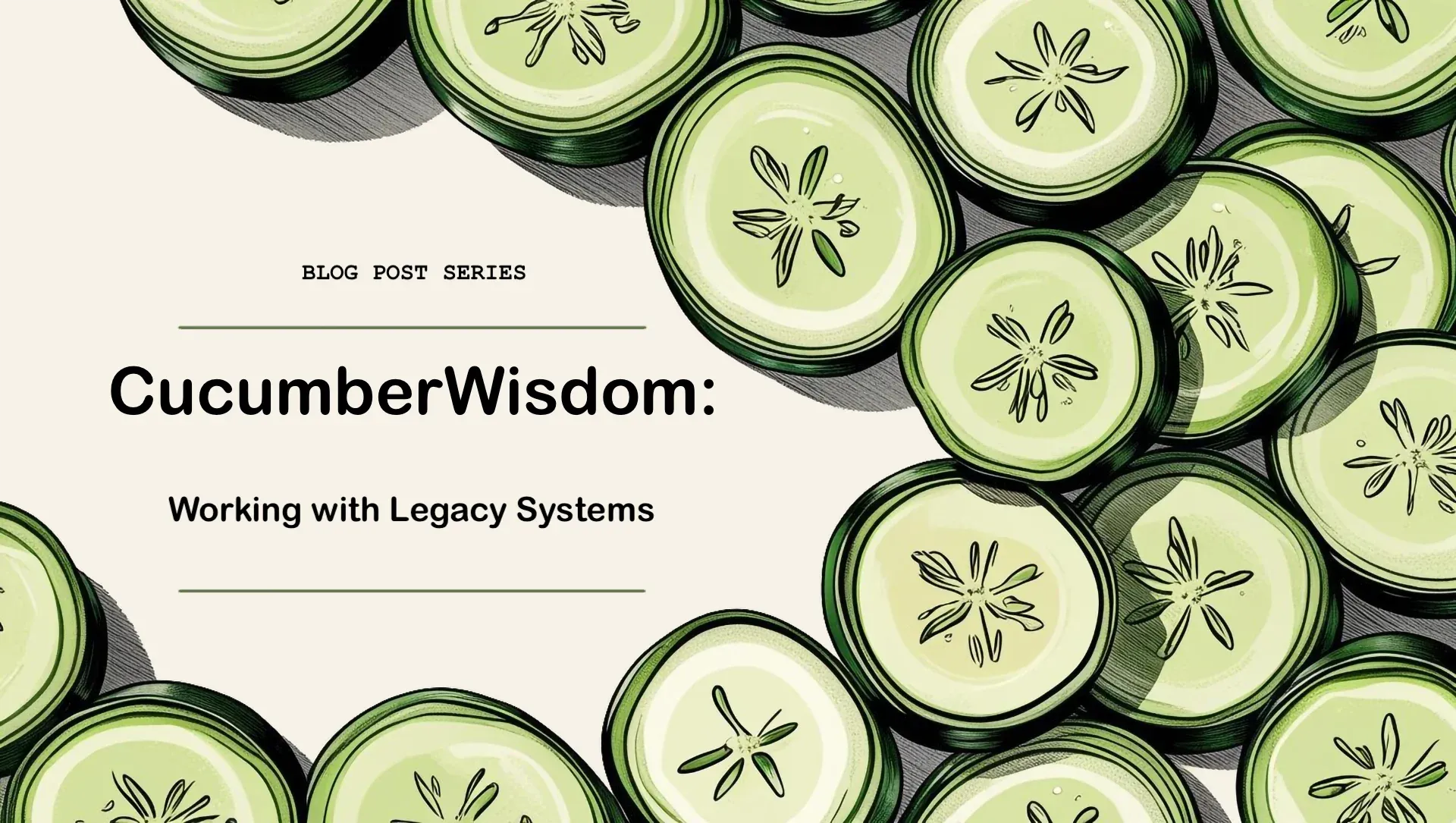Cucumber Wisdom: Working with Legacy Systems
Learn how to use Cucumber and automated testing to safely improve legacy codebases. Discover strategies for building confidence, reducing risk, and evolving old systems with modern practices.

The Challenge of Legacy Systems
“In the real world, you don't always get the luxury of working on shiny new code.”
Every developer eventually faces it—the massive, tangled codebase that no one fully understands. Changing anything feels risky. The fear of breaking something important can paralyze teams, slowing progress to a crawl.
Legacy systems often lack documentation and tests. Over time, the gap between what the system does and what people think it does grows. That’s where automated tests and Cucumber come in.
Why Cucumber Helps
Cucumber can serve as a bridge between the old and the new. By writing high-level, business-readable tests, you start documenting behavior as it exists today—not as it was intended years ago.
“Automated tests can help you keep this fear at bay.”
Each passing test confirms that an existing feature still works. Each failing test uncovers hidden behavior or assumptions that need to be clarified. Over time, you build safety nets that give you the confidence to refactor and evolve the code.
Practical Strategies for Working with Legacy Code
1. Start by Capturing Current Behavior
Before making any changes, write Cucumber scenarios that describe what the system does today. This helps expose gaps between expected and actual behavior.
2. Incremental Refactoring
Once you have tests in place, you can begin refactoring with confidence. Make small, reversible changes, and use your test suite to verify nothing breaks.
3. Build a Safety Net Over Time
Don’t try to cover the entire system at once. Focus on critical paths or areas you frequently modify. Gradually, your automated tests will grow into a reliable safety net.
4. Collaborate with the Business Side
Legacy systems often support essential business processes. Use plain-language Cucumber scenarios to involve non-technical stakeholders in clarifying how the system should behave.
Benefits of Introducing Cucumber to Legacy Projects
- Reduced fear of changing old code.
- Improved communication between developers and business stakeholders.
- Living documentation for parts of the system that previously had none.
- Faster onboarding for new team members who can read executable specifications.
Closing Thought
You may not always get to start with a clean slate—but you can make legacy systems safer and more understandable, one scenario at a time. With Cucumber, even old code can become a foundation for confident, collaborative development.
Acknowledgements
This article draws inspiration from The Cucumber for Java Book by Seb Rose, Matt Wynne, and Aslak Hellesøy, who highlight how automated testing and collaboration can transform the way teams approach legacy systems.
